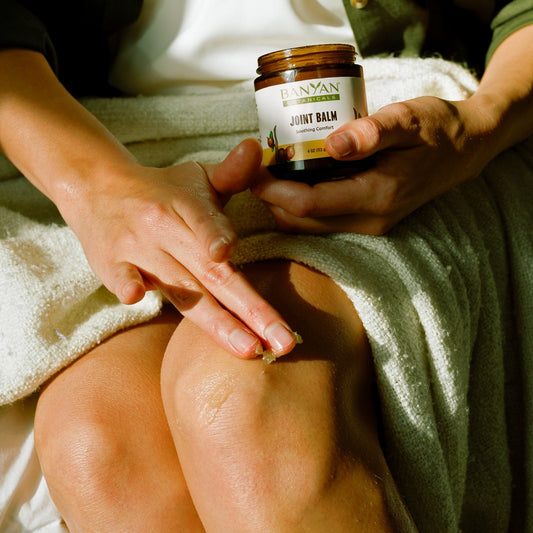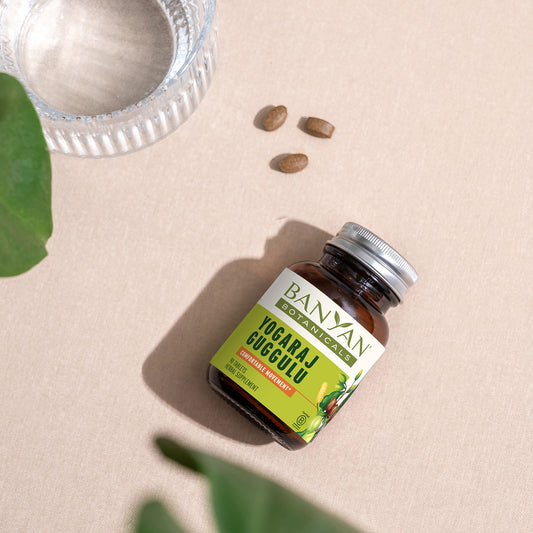The word “
Yoga provides us with a wide variety of movements and poses that can be modified and implemented to immaculately fit each of our unique blueprints. Yoga has been around for thousands of years, established in the US since the 1950s, and has gained enormous leaps in recognition and popularity in the past decade.
Yoga is one of the fastest-growing industries in the United States and so much more than the marketing of it conveys. We know yoga is not something we do—yoga is a lifestyle.
When we refer to yoga in a Western context, we are usually speaking of
As a yoga teacher, people often ask, “How long did it take you to learn that?” or “How did you get so flexible?” I must admit, much of my flexibility and aptitude for asanas came naturally to me. I was a dancer when I was young, and both my parents are flexible.
However, being limber in no way, shape, or form makes my practice better, stronger, or more advanced than anyone else's. Being able to make a particular shape does not make one “advanced.” Being able to listen to one's body, respect one's limitations, and have a strong willingness to grow, while staying as peaceful as possible, is far more impressive.
Yoga, and this journey through life, is not about how impressive the container is. Whether it be the body, the house, the job, the car, the title, and so on—this journey is about the contents within the container. We use yoga and Ayurveda as tools to keep the body and mind healthy, and in doing so, they are less likely to distract or detour us from our purpose.
Ayurveda and Yoga help us to keep our vessels capable so that we can move through the world with more agility and mastery.
If you are new to yoga, please note that yoga is not directly linked to any religious affiliation. When I first started teaching, I taught in a gym where they told me, “Don't do that omming thing because it scares people, and this isn't a church or anything.” I respected their wishes and vowed to help educate them as time progressed.
Like Ayurveda, yoga was born in ancient India under the umbrella of Hinduism, but practicing yoga does not require you to accept or subscribe to any particular belief system. By keeping your

Yoga Styles
You may be well versed in the myriad styles of yoga available to us. I learned yoga in China (and in Mandarin, no less), so I had no clue as to what “style” I was enjoying, or that there were styles for that matter.
I dove into Ashtanga and trained in Hatha in India, but once I saturated myself in the yoga scene in the US, my mind was blown to learn of all the different styles that existed. I'll tell you what, there is absolutely something for everyone.
You may recall the moment you initially Googled a yoga studio, checked out a yoga website, and walked into your first yoga class. You were introduced to foreign words like namaste, vinyasa, hatha, yin, and other terms that may have caused your brain to illuminate with question marks.
As you invested more time into your practice these terms became familiar and relevant. I'm sure we share a fondness for the term namaste. Namaste means “the light within me honors, respects, and supports the light in you.” How sweet is that? Essentially, it expresses that I see you, I respect you, and I appreciate you.
If you are newer to a yoga practice, study primarily at home, or in a studio that offers one specific style of yoga, you may be curious as to what else is out there. Below is a brief description of popular styles of yoga to help you find a studio or class that promotes the experience you may be seeking.
-
Hatha Yoga.The original form of physical yoga, asana, is called Hatha, meaning “sun-moon.” Hatha yoga balances our masculine and feminine qualities. This translates to making us both strong and active, yet also flexible and calm. Traditionally, Ayurveda speaks of Hatha yoga as
- Vinyasa Yoga. Vinyasa yoga means "to place in a special way." The sequencing takes Hatha yoga postures and layers the breath and movement together to create a flow. This is a fun experience if you are in the mood to express yourself with your body. To me, it feels like a dance.
- Gentle/Basic Yoga. This style is geared toward beginners. The classes are thorough, slow, and descriptive. Novice and veteran yogis alike benefit from gentle and basic classes. These classes provide a safe and supportive space for those new to yoga and are a great environment for experienced practitioners to revisit and fortify their foundation.
- Yin/Restorative Yoga. The postures are seated and held for longer durations of time (1–5 minutes). Props such as blocks, blankets, and straps are often utilized to provide support and comfort. Yin and yang are concepts from Chinese Medicine, and Ayurveda shares the same ideology. Yin is the perfect counterbalance to yang. Yang is the DO aspect of life, yin is the BE aspect of life. With that said, yin is suitable and therapeutic for everyone. I'd recommend you try it if you haven't already. Yin yoga enlists similar effects as a glass of wine (no joke). According to the yin/yang principle as applied to food and substances, wine is an expanding, or yin, substance, and elicits relaxation.
- Power/Hot Yoga. This style produces heat and vigor. Power builds strength and stamina. These classes tend to be relatively intense. If you are an athlete, you probably gravitate toward this style because you are wired to be up for the challenge. The heat helps loosen stiff muscles. (Balance Power classes with Yin yoga).
- Ashtanga Yoga. The original Vinyasa. The primary sequence is designed to bring you endurance, strength, flexibility, and balance. The sequencing is physically demanding; Ashtanga places a predominate emphasis on breath. Ashtanga is nice because it is the same sequence every time. Your muscles will start to memorize the sequences so you can keep your mind out of it and give attention to your breathing. This style can turn into a moving meditation.
- Bikram Yoga. Twenty-six postures done in a heated room under strict direction. The sequencing opens the body and creates a balanced muscular-skeletal system. Bikram is unique in that you can do it in New York, Los Angeles, or Maui, and it will be the same exact 26 postures. All Bikram teachers are trained under uniform guidelines, so they all use similar language and cueing.
-
Kundalini Yoga. From the Tantra yoga tradition, Kundaliniyoga uses poses, breath, meditation, and chanting to awaken the kundalini energy housed in the spine. The practice accesses the nervous system, glands, and

Within these styles there is plenty of diversity. Yoga is not a one-note song. Experiment. Try different studios and videos until you find what best suits you. You may notice that you gravitate toward a particular teacher more than a particular style. If your teacher is knowledgeable, she or he can make almost any style pleasant for you by offering modifications and adjustments.
The intention and energy of the teacher will color your experience; finding someone you resonate with will flavor your experience. If your interest in yoga has been piqued, search for a local studio, then stop in and scope out the vibe. Or practice at home with the help of various online resources.
“Body is the bow, Asana is the arrow, Soul is the target.”

Best Poses for Each Dosha
If you are newer to yoga, you will benefit from a teacher or video guide to help you recognize these postures. A teacher will assist you through the poses and help you find the correct alignment, depth, and modifications as needed.
- The seat or home of
- The seat or home of pitta is in the small intestine. This is why
- The home of
Most yoga poses are good for everyone as long as they are not done to the extreme. There should never be any pushing or force. For therapeutic purposes, or for a happy life, no one needs to wrap their foot behind their head or twist until they re-taste their lunch. If that sort of thing comes naturally and tickles your fancy—go for it. For the cornerstone aim of achieving balance and well-being, just explore the poses and styles that resonate with your true nature.










